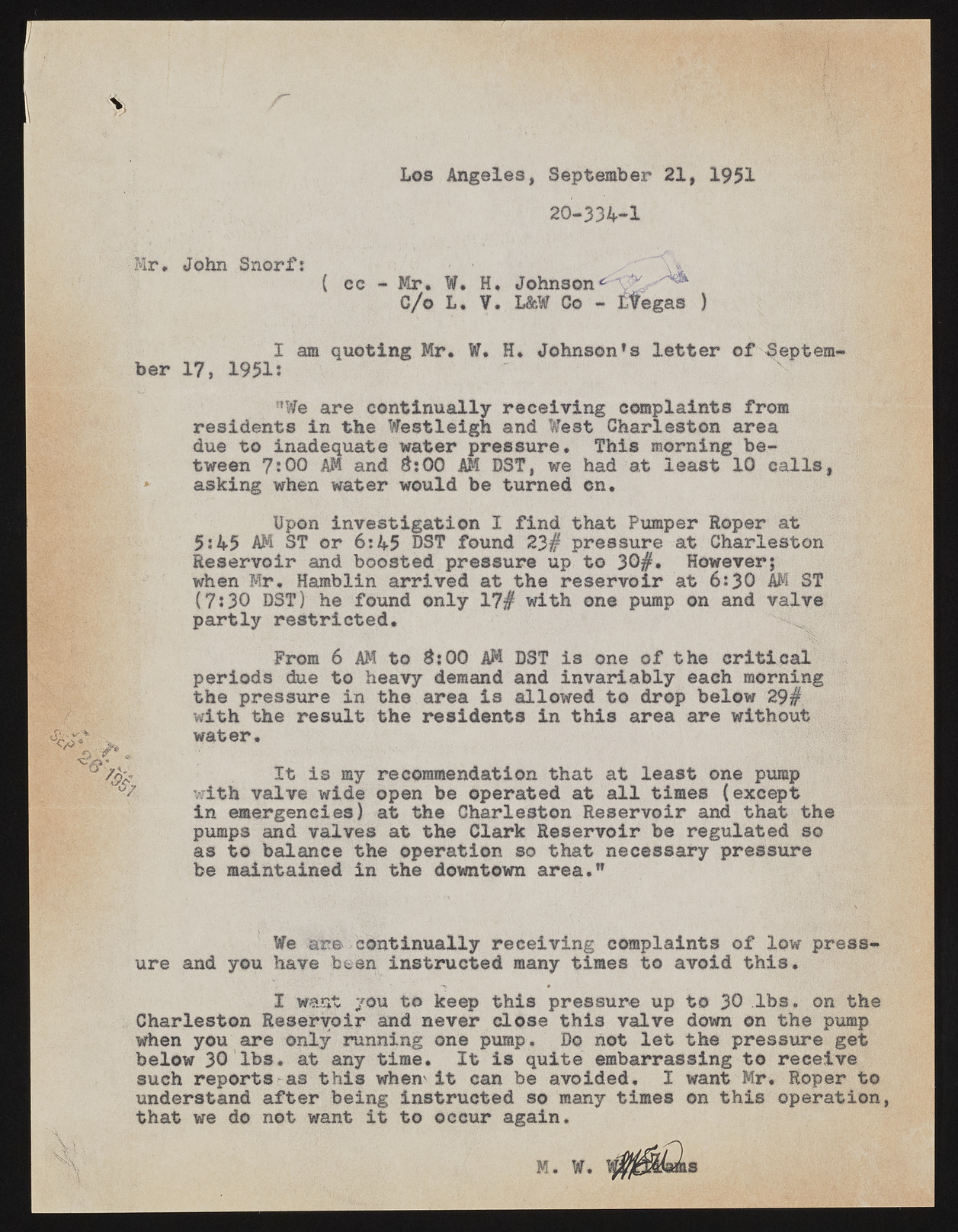Copyright & Fair-use Agreement
UNLV Special Collections provides copies of materials to facilitate private study, scholarship, or research. Material not in the public domain may be used according to fair use of copyrighted materials as defined by copyright law. Please cite us.
Please note that UNLV may not own the copyright to these materials and cannot provide permission to publish or distribute materials when UNLV is not the copyright holder. The user is solely responsible for determining the copyright status of materials and obtaining permission to use material from the copyright holder and for determining whether any permissions relating to any other rights are necessary for the intended use, and for obtaining all required permissions beyond that allowed by fair use.
Read more about our reproduction and use policy.
I agree.Information
Digital ID
Permalink
Details
Member of
More Info
Rights
Digital Provenance
Publisher
Transcription
Los Angeles, September 21, 1951 20-334-1 Mr* John Snorf: \\ { cc - Mr. W. H* Johnsont C/o L. V. L&W Co - LTegas ) I am quoting Mr. W. H. JohnsonTs letter of September 17, 1951i nWe are continually receiving complaints from residents in the Westleigh and West Charleston area due to inadequate water pressure. This morning between 7:00 AM and 3:00 AM DST, we had at least 10 calls, asking when water would be turned on. Upon investigation I find that Pumper Roper at 5:45 AM ST or 6:45 DST found 23# pressure at Charleston Reservoir and boosted pressure up to 30#. However; when Mr. Hamblin arrived at the reservoir at 6:30 AM ST (7:30 DST) he found only 17# with one pump on and valve partly restricted. "^1Sf From 6 AM to 3:00 AM DST is one of the critical periods due to heavy demand and invariably each morning the pressure in the area is allowed to drop below 29# with the result the residents in this area are without water. / It is my recommendation that at least one pump with valve wide open be operated at all times {except in emergencies) at the Charleston Reservoir and that the pumps and valves at the Clark Reservoir be regulated so as to balance the operation so that necessary pressure be maintained in the downtown area.” We are continually receiving complaints of low pressure and you have been instructed many times to avoid this. I I want you to keep this pressure up to 30 lbs. on the Charleston Reservoir and never close this valve down on the pump when you are only running one pump. Do not let the pressure get below 30 lbs. at any time. It is quite embarrassing to receive such reports as this when' it can be avoided, I want Mr. Roper to understand after being instructed so many times on this operation, that we do not want it to occur again.

